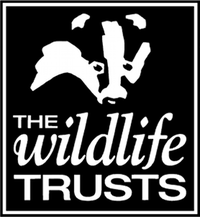There are contrasting views that I would like to consider by looking at Yorkshire’s approach to wild life. They are represented by the Yorkshire Wildlife Park the commercially orientated entertainment park and the Yorkshire Wildlife Trust the 70 year old members organisation managing designated nature reserves.

Grit gets you everywhere
Yorkshire Wildlife Trust
Yorkshire has a landscape second to none that is rich in the variety of flora and fauna of largely native species. We don’t need to tell Yorkshire folk about the hill farms or the fertile pastures in the Dales, Wolds & North Yorkshire national park nor the wetland and moorland, fen and bog that have been created as a result of our fine climate. Add to this the natural environment around our rivers and coast and no wonder wildlife like Yorkshire folk are happy and proud to live in the county.
This living environment and natural heritage is to be treasured and where necessary protected for future generations. It is held in trust for those future generations so it is natural for a membership led charitable trust to support the maintenance and well being of the Yorkshire wild life.
Facts about Yorkshire Wildlife Trust

- The organisation is headquartered in York and our trust has been operating since 1946. It is partnered with the 46 other UK wildlife trusts.
- Yorkshire Wildlife Trust now manages 97 nature reserves across the traditional county. There is bound to be a site near you and many are a treat for visitors, naturalists, bird watchers and tourists.
- The top sites with visitor centers and educational programmes include : Living Seas Centre, Flamborough. Pearson Park Wildlife Garden, Hull Potteric Carr Nature Reserve, Doncaster Spurn National Nature Reserve, Holderness and Stirley Community Farm, Huddersfield
- Moorland, ancient woodlands, beaches and mixed wetland habitats are all areas under the protection offered by the trust.
- As a registered charity no.210807 they have an income of just over £5m per annum of which 80% is from members or the trusts own efforts. The government funded conservation and land management subsidies account for the rest.
- The Grazing Animal Project is just one of the many schemes currently in hand ’10 years ago Yorkshire Wildlife Trust was given a small flock of about 60 black Hebridean sheep to be used for conservation grazing. Over the years this flock has been managed so that now there are over 500 sheep which are kept at three home sites and sent out in “teams” to graze more than 35 of our reserves to maintain important habitats for wildlife.’ This helps protect rare breeds and bring rare habitats back into balance.
Facts about Yorkshire Wildlife Park

- The zoo and wildlife park was converted from a riding school and farm – Brockholes Visitor Center Doncaster in 2009
- It claims to be ‘A dynamic centre for conservation and welfare’
- There are 70+ different species of animal.
- The cost of an adult day ticket until 9th March is £15.50 and £13.50 for a child over 2
- No pets or dogs, balls, skateboards or scooters are permitted into the no smoking park.
- Daily attractions include Meerkat and Mongoose Madness and Feeding Time, Bear Facts, Deadly Bugs and Wallaby Walkabout
- There is a linked charity foundation no.152642 with income of circa £102,000 pa. The aims include to ‘continue to build and promote YWPF’s brand; To continue to implement a comprehensive fundraising strategy; To continue to identify and develop relationships with key partners and stakeholders’ and make grants or can arrange expert support in the areas of exotic species conservation and welfare. YWPF will also consider supporting research.
Conclusions
There is room for wildlife organisations of all persuasions – let us also make room for all appropriate wildlife and human endeavour. Like the Yorkshire Naturalists Union Charity No: 224018 one of the country’s oldest wildlife organisations, having celebrated the 156th anniversary last year.
In an oft quoted comment ‘charity begins at home’ so my personal preference is to enjoy and support the 90 odd nature reserves of the Yorkshire Wildlife Trust rather than exotic animals best supported in far flung climates.


Pingback: A Garden Jim but not as we know it | Gardeners Tips